Identifying Seasonal Product Opportunities with Helium 10 Tools
Seasonal products can be a goldmine for Amazon sellers, offering the potential for high sales during specific times of the year. However, identifying the right seasonal products and timing their launch requires careful research and planning. Helium 10, a comprehensive suite of tools for Amazon sellers, provides powerful features to help you uncover seasonal product opportunities and maximize your profits. In this guide, we’ll explore how to use Helium 10 tools to identify, analyze, and capitalize on seasonal trends. From understanding seasonal demand to optimizing your listings, this guide will equip you with the knowledge and strategies to succeed in the seasonal product market. 🌟📈🎄
1. Understanding Seasonal Products and Their Potential
Seasonal products are items that experience a surge in demand during specific times of the year. Examples include holiday decorations, summer outdoor gear, winter clothing, and back-to-school supplies. These products often have a short sales window but can generate significant revenue if timed correctly. However, selling seasonal products also comes with challenges, such as managing inventory and predicting demand. To succeed, sellers must identify the right products, plan their launches strategically, and optimize their listings for maximum visibility. Helium 10’s tools can help you navigate these challenges and unlock the potential of seasonal products. Let’s dive into how you can use these tools effectively. 🛍️📅💡
1.1. What Are Seasonal Products?
Seasonal products are items that experience increased demand during specific periods of the year. These periods are often tied to holidays, weather changes, or cultural events. For example, Christmas decorations sell well in November and December, while swimwear is popular in the summer months. Seasonal products can be highly profitable due to their concentrated demand, but they also require careful planning. Sellers must ensure they have enough inventory to meet demand during the peak season and avoid overstocking afterward. Additionally, seasonal products often face stiff competition, so differentiation and optimization are key to standing out. By understanding the nature of seasonal products, you can make informed decisions about which items to sell and when to launch them. 🎁🌞❄️
1.2. Why Sell Seasonal Products?
Selling seasonal products offers several advantages for Amazon sellers. First, these products often have high demand during their peak season, allowing sellers to generate significant revenue in a short period. Second, seasonal products can help sellers diversify their product portfolio and reduce reliance on year-round items. Third, selling seasonal products can attract new customers who may return for other products in the future. However, selling seasonal products also comes with risks, such as inventory management challenges and the need for precise timing. By using Helium 10’s tools, you can mitigate these risks and maximize the benefits of selling seasonal products. 💰📊🎯
1.3. Challenges of Selling Seasonal Products
While seasonal products can be profitable, they also present unique challenges. One of the biggest challenges is inventory management. Sellers must ensure they have enough stock to meet demand during the peak season but avoid overstocking, which can lead to storage fees or unsold inventory. Another challenge is timing. Launching a seasonal product too early or too late can result in missed sales opportunities. Additionally, seasonal products often face intense competition, making it difficult to stand out. To overcome these challenges, sellers must conduct thorough research, plan their launches carefully, and optimize their listings for maximum visibility. Helium 10’s tools can help you address these challenges and succeed in the seasonal product market. 📦⏰🏆
1.4. How Helium 10 Can Help
Helium 10 offers a suite of tools designed to help sellers identify, analyze, and optimize seasonal products. For example, Black Box allows you to filter products based on seasonal demand, while Trendster helps you analyze historical trends to predict future demand. Additionally, tools like Inventory Protector and Refund Genie can help you manage inventory and minimize losses. By leveraging these tools, you can make data-driven decisions and maximize your profits from seasonal products. In the following sections, we’ll explore how to use Helium 10’s tools to identify and capitalize on seasonal product opportunities. 🛠️📊💡
1.5. Key Metrics for Seasonal Products
When analyzing seasonal products, it’s important to focus on key metrics that indicate their potential. These metrics include estimated monthly sales, Best Seller Rank (BSR), competition level, and revenue potential. For example, a product with high estimated monthly sales and low competition is likely to be a good seasonal opportunity. Additionally, analyzing historical trends can help you predict future demand. Helium 10’s tools provide detailed data on these metrics, allowing you to make informed decisions about which seasonal products to sell. By focusing on these key metrics, you can identify profitable opportunities and maximize your success in the seasonal product market. 📈📊🎯

2. Using Black Box to Identify Seasonal Products
Black Box is one of Helium 10’s most powerful tools for product research, and it’s particularly useful for identifying seasonal products. By setting specific filters, you can narrow down your search to products that experience seasonal demand. In this section, we’ll explore how to use Black Box to identify seasonal products, analyze their potential, and make informed decisions about which items to sell. Let’s dive into the step-by-step process of using Black Box for seasonal product research. 🕵️♂️📊🎄
2.1. Setting Up Seasonal Filters
The first step in using Black Box to identify seasonal products is setting up the right filters. Start by selecting the product category you’re interested in, such as "Holiday Decor" or "Sports & Outdoors." Next, set filters for estimated monthly sales, average price, and number of reviews to narrow down your search. For example, you might look for products with at least 1,000 monthly sales, an average price of $20, and fewer than 200 reviews. Additionally, you can use the "Seasonal" filter to identify products that experience seasonal demand. By setting up these filters, you can generate a list of potential seasonal products to analyze further. 🎯📅📊
2.2. Analyzing Seasonal Demand
Once you’ve generated a list of potential seasonal products, the next step is to analyze their demand. Black Box provides detailed data on each product, including its Best Seller Rank (BSR), revenue potential, and competition level. For example, a product with a low BSR and high revenue potential is likely to be a good seasonal opportunity. Additionally, you can use Helium 10’s Trendster tool to analyze historical trends and predict future demand. By analyzing this data, you can make informed decisions about which seasonal products to sell and when to launch them. 📈📊💡
2.3. Evaluating Competition Levels
Competition is a key factor to consider when selling seasonal products. Black Box provides metrics like the number of reviews and sellers to help you assess competition levels. For example, a product with a high number of reviews and sellers may indicate a saturated market, while a product with fewer reviews and sellers may offer more opportunities. Additionally, you can use Helium 10’s Xray tool to analyze competitors’ listings and identify gaps in the market. By evaluating competition levels, you can determine whether a seasonal product is worth pursuing and how to position it in the market. 🏆📊🕵️♀️
2.4. Calculating Revenue Potential
Revenue potential is another important metric to consider when analyzing seasonal products. Black Box allows you to calculate the revenue potential of a product by multiplying its estimated monthly sales by its average price. For example, a product with 1,000 monthly sales and an average price of $20 has a revenue potential of $20,000 per month. However, it’s important to consider factors like competition and seasonality when calculating revenue potential. By focusing on products with high revenue potential, you can maximize your profits from seasonal sales. 💰📈🎯
2.5. Making Informed Decisions
Once you’ve analyzed the data, the final step is to make informed decisions about which seasonal products to sell. Consider factors like demand, competition, and revenue potential to determine which products are worth pursuing. Additionally, plan your launch strategy carefully to ensure you have enough inventory to meet demand during the peak season. By making data-driven decisions, you can maximize your success in the seasonal product market and achieve your business goals. 📊📅🚀
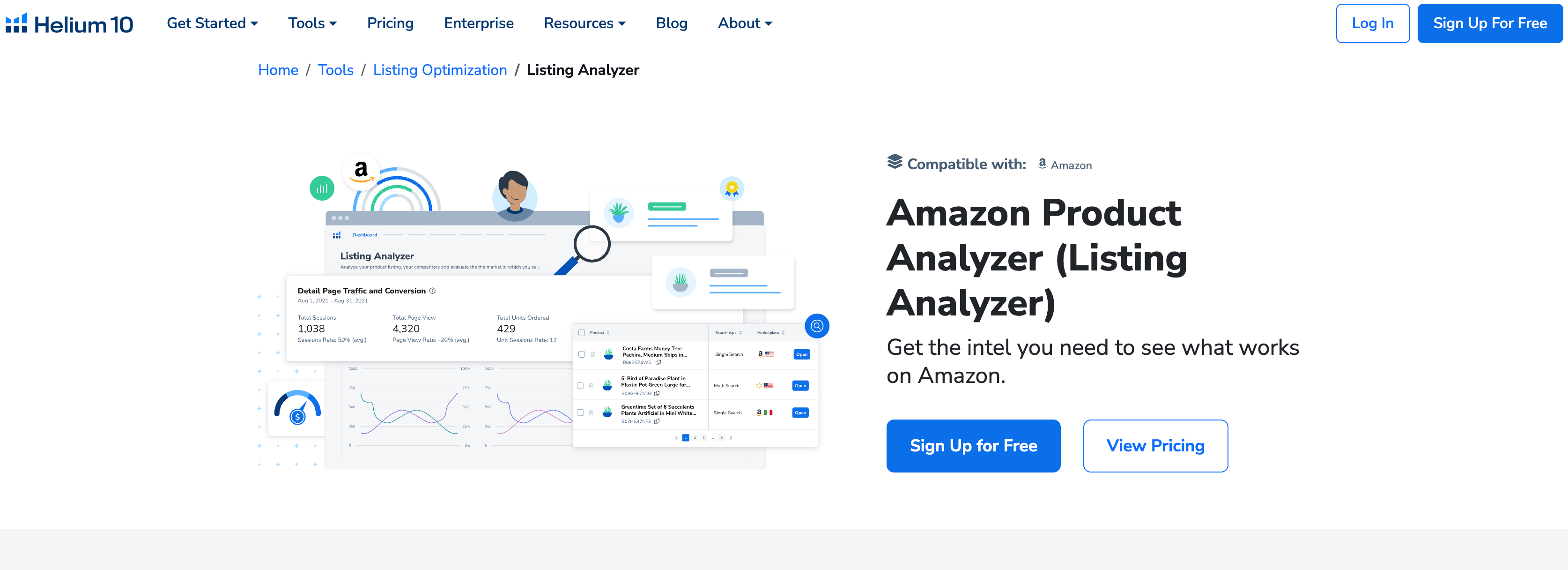
3. Leveraging Trendster for Seasonal Trend Analysis
Trendster is a powerful Helium 10 tool that allows you to analyze historical trends and predict future demand for seasonal products. By using Trendster, you can identify products that are likely to experience increased demand during specific times of the year. In this section, we’ll explore how to use Trendster for seasonal trend analysis, including how to interpret the data and make informed decisions about which products to sell. Let’s dive into the step-by-step process of using Trendster to uncover seasonal opportunities. 📊📈🎄
3.1. Understanding Trendster’s Features
Trendster provides detailed data on historical trends for specific products, including their Best Seller Rank (BSR), price, and reviews over time. By analyzing this data, you can identify patterns and predict future demand. For example, you might notice that a product’s BSR improves significantly during the holiday season, indicating increased demand. Additionally, Trendster allows you to compare multiple products to identify the best seasonal opportunities. By understanding Trendster’s features, you can use the tool effectively to uncover seasonal trends and make informed decisions. 🕵️♂️📊💡
3.2. Analyzing Historical Trends
The first step in using Trendster for seasonal trend analysis is analyzing historical trends. Start by entering the ASIN (Amazon Standard Identification Number) of a product you’re interested in. Trendster will generate a graph showing the product’s BSR, price, and reviews over time. Look for patterns that indicate seasonal demand, such as a significant improvement in BSR during a specific period. Additionally, you can use Trendster to compare multiple products and identify the best seasonal opportunities. By analyzing historical trends, you can predict future demand and make informed decisions about which products to sell. 📈📅🎯
3.3. Predicting Future Demand
Once you’ve analyzed historical trends, the next step is to predict future demand. Trendster’s data can help you identify products that are likely to experience increased demand during specific times of the year. For example, if a product’s BSR improves significantly during the holiday season, it’s likely to be a good seasonal opportunity. Additionally, you can use Trendster to monitor trends in real-time and adjust your strategy accordingly. By predicting future demand, you can plan your launches strategically and maximize your profits from seasonal sales. 📊📈🚀
3.4. Comparing Multiple Products
Trendster allows you to compare multiple products to identify the best seasonal opportunities. Start by entering the ASINs of the products you’re interested in. Trendster will generate graphs showing the BSR, price, and reviews of each product over time. Compare these graphs to identify products with the strongest seasonal trends. For example, you might notice that one product’s BSR improves significantly during the holiday season, while another product’s BSR remains stable. By comparing multiple products, you can identify the best seasonal opportunities and make informed decisions about which items to sell. 🕵️♀️📊🎯
3.5. Making Data-Driven Decisions
Once you’ve analyzed the data and compared multiple products, the final step is to make data-driven decisions about which seasonal products to sell. Consider factors like historical trends, predicted demand, and competition levels to determine which products are worth pursuing. Additionally, plan your launch strategy carefully to ensure you have enough inventory to meet demand during the peak season. By making data-driven decisions, you can maximize your success in the seasonal product market and achieve your business goals. 📊📅💡
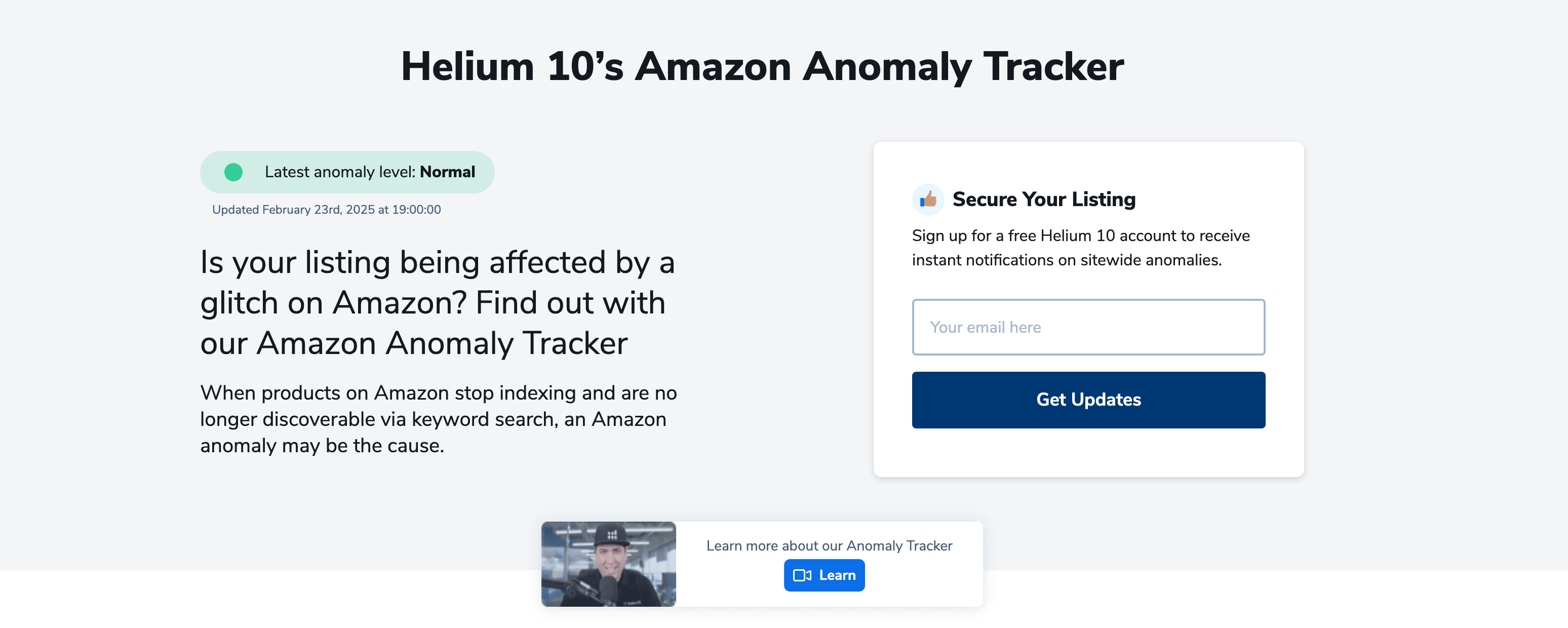
4. Optimizing Seasonal Product Listings
Once you’ve identified a seasonal product, the next step is to optimize your listing for maximum visibility and sales. Helium 10 offers several tools to help you optimize your listings, including Scribbles, Cerebro, and Keyword Tracker. In this section, we’ll explore how to use these tools to create compelling product titles, bullet points, and descriptions that attract customers and improve your search rankings. Let’s dive into the step-by-step process of optimizing seasonal product listings. 🛠️📊🎄
4.1. Crafting Compelling Product Titles
Your product title is one of the most important elements of your listing, as it’s the first thing customers see when searching for products. Use Helium 10’s Scribbles tool to draft a compelling title that includes relevant keywords and highlights the product’s unique features. For example, if you’re selling a Christmas ornament, your title might include keywords like "Christmas Ornament," "Festive Decor," and "Holiday Gift." Additionally, keep your title concise and easy to read. By crafting a compelling product title, you can attract more customers and improve your search rankings. 🎯📝💡
4.2. Writing Engaging Bullet Points
Bullet points are another critical element of your listing, as they provide customers with quick information about your product. Use Helium 10’s Scribbles tool to write engaging bullet points that highlight the product’s key features, benefits, and uses. For example, if you’re selling a Halloween costume, your bullet points might include information about the material, size, and design. Additionally, use keywords from Helium 10’s Cerebro tool to optimize your bullet points for search rankings. By writing engaging bullet points, you can provide customers with the information they need to make a purchase decision. 📝📊🎯
4.3. Creating Detailed Product Descriptions
Your product description is an opportunity to provide customers with more detailed information about your product. Use Helium 10’s Scribbles tool to create a detailed description that highlights the product’s features, benefits, and uses. For example, if you’re selling a summer beach towel, your description might include information about the material, size, and design. Additionally, use keywords from Helium 10’s Cerebro tool to optimize your description for search rankings. By creating a detailed product description, you can provide customers with the information they need to make a purchase decision and improve your search rankings. 📝📊💡
4.4. Optimizing for Keywords
Keywords are essential for improving your search rankings and attracting more customers. Use Helium 10’s Cerebro tool to identify relevant keywords for your product. Enter a competitor’s ASIN into Cerebro, and it will generate a list of keywords that the competitor is ranking for. Use these keywords in your product title, bullet points, and description to optimize your listing for search rankings. Additionally, use Helium 10’s Keyword Tracker to monitor your keyword rankings and adjust your strategy as needed. By optimizing for keywords, you can improve your search rankings and attract more customers. 🎯📊🚀
4.5. Monitoring and Adjusting Your Listing
Once your listing is live, it’s important to monitor its performance and make adjustments as needed. Use Helium 10’s Keyword Tracker to monitor your keyword rankings and identify areas for improvement. Additionally, use Helium 10’s Review Insights tool to gather feedback from customers and make improvements to your product. By monitoring and adjusting your listing, you can ensure it remains optimized for maximum visibility and sales. 📊📈💡

5. Managing Inventory for Seasonal Products
Inventory management is one of the biggest challenges of selling seasonal products. Overstocking can lead to storage fees or unsold inventory, while understocking can result in missed sales opportunities. Helium 10 offers several tools to help you manage your inventory effectively, including Inventory Protector and Refund Genie. In this section, we’ll explore how to use these tools to manage your inventory and minimize losses. Let’s dive into the step-by-step process of managing inventory for seasonal products. 📦📊🎄
5.1. Setting Up Inventory Protector
Inventory Protector is a Helium 10 tool designed to help sellers manage their inventory more effectively. Start by setting minimum and maximum inventory levels for your seasonal products. Inventory Protector will automatically adjust your pricing based on inventory levels, helping you maximize your profits. Additionally, the tool can alert you when your inventory is running low, allowing you to restock in time to meet demand. By setting up Inventory Protector, you can avoid overstocking and understocking and ensure you have enough inventory to meet demand during the peak season. 📦📊💡
5.2. Monitoring Inventory Levels
Once you’ve set up Inventory Protector, it’s important to monitor your inventory levels regularly. Use the tool’s dashboard to track your inventory levels and receive alerts when your stock is running low. Additionally, use Helium 10’s Product Tracker tool to monitor the performance of your seasonal products and adjust your inventory levels as needed. By monitoring your inventory levels, you can ensure you have enough stock to meet demand and avoid missed sales opportunities. 📊📈🚀
5.3. Restocking Strategically
Restocking is a critical aspect of managing inventory for seasonal products. Use Helium 10’s Inventory Protector to determine the optimal time to restock your seasonal products. For example, if you’re selling Christmas decorations, you might want to restock in October to ensure you have enough inventory for the holiday season. Additionally, consider factors like lead times and shipping costs when planning your restocking strategy. By restocking strategically, you can ensure you have enough inventory to meet demand and maximize your profits. 📦📅💡
5.4. Minimizing Losses with Refund Genie
Refund Genie is a Helium 10 tool designed to help sellers minimize losses by identifying and claiming reimbursements for lost or damaged inventory. Use Refund Genie to scan your account for eligible reimbursements and submit claims to Amazon. Additionally, the tool can help you identify patterns in lost or damaged inventory, allowing you to make improvements to your inventory management process. By minimizing losses with Refund Genie, you can protect your profits and ensure your seasonal products remain profitable. 📊📦💡
5.5. Planning for Post-Season Inventory
Once the peak season is over, it’s important to plan for post-season inventory. Use Helium 10’s Inventory Protector to adjust your pricing and clear out any remaining stock. Additionally, consider offering discounts or bundling products to attract customers and reduce excess inventory. By planning for post-season inventory, you can minimize storage fees and prepare for the next seasonal product cycle. 📦📅🎯
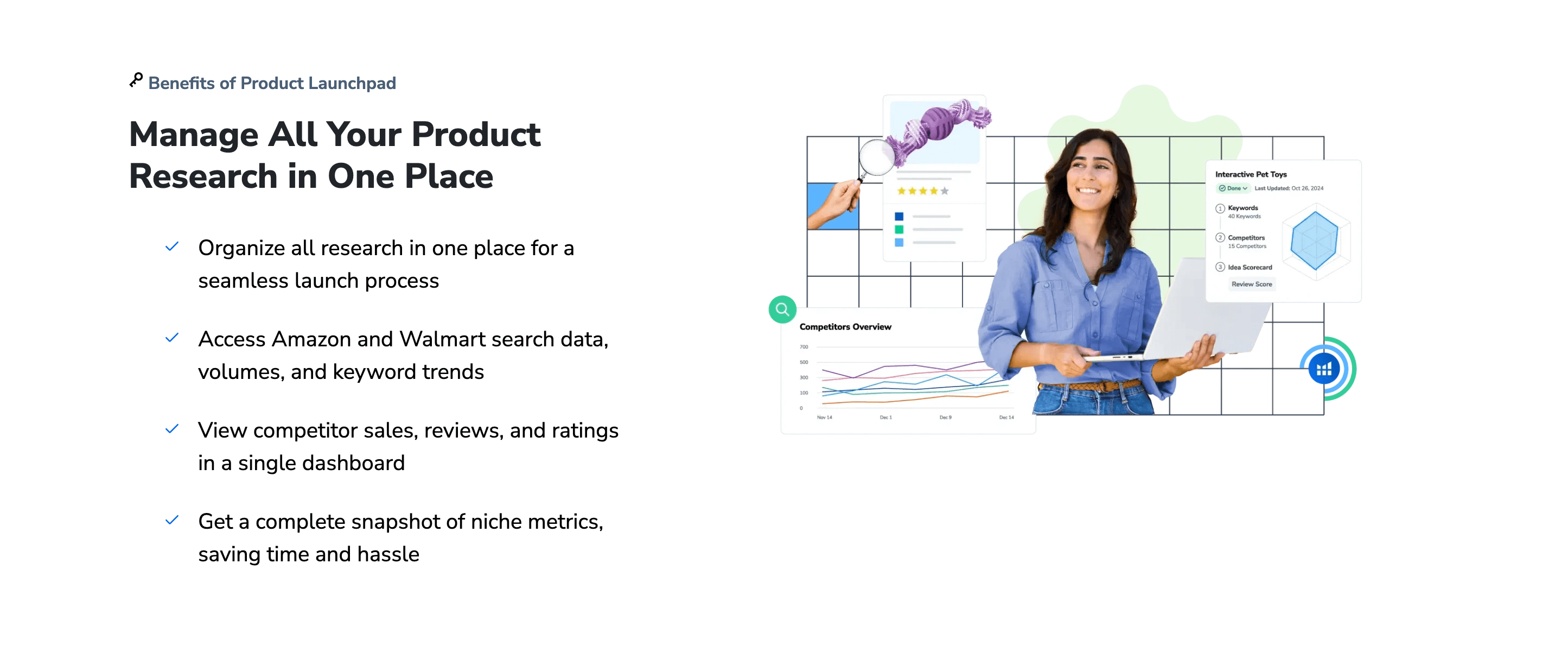
6. Scaling Your Seasonal Product Business
Once you’ve successfully launched and managed a seasonal product, the next step is to scale your business. Scaling involves expanding your product line, increasing your marketing efforts, and optimizing your operations to handle higher sales volumes. Helium 10’s tools can help you achieve this by providing insights into complementary products, automating repetitive tasks, and improving your overall efficiency. In this section, we’ll explore how to scale your seasonal product business using Helium 10’s tools. Let’s dive into the strategies and steps you can take to grow your business. 🚀📈💡
6.1. Expanding Your Product Line
One of the most effective ways to scale your seasonal product business is by expanding your product line. Use Helium 10’s Black Box tool to identify complementary products that align with your existing seasonal offerings. For example, if you’re selling Christmas ornaments, you might consider adding tree toppers, stockings, or holiday lights to your inventory. By expanding your product line, you can attract more customers and increase your average order value. Additionally, use Helium 10’s Trendster tool to analyze trends and identify new seasonal opportunities. 📊🎄🛍️
6.2. Automating Repetitive Tasks
As your business grows, you’ll need to automate repetitive tasks to save time and improve efficiency. Helium 10 offers several tools that can help you automate tasks like keyword tracking, inventory management, and listing optimization. For example, use Keyword Tracker to monitor your keyword rankings automatically and receive alerts when changes occur. Additionally, use Inventory Protector to manage your inventory levels and adjust pricing based on stock availability. By automating repetitive tasks, you can focus on strategic activities that drive growth. 🤖📊💡
6.3. Increasing Marketing Efforts
Scaling your seasonal product business also requires increasing your marketing efforts. Use Helium 10’s Cerebro tool to identify high-performing keywords and optimize your Amazon PPC (Pay-Per-Click) campaigns. Additionally, consider leveraging social media platforms like Instagram, Facebook, and TikTok to promote your seasonal products. For example, create engaging content that showcases your products in action, such as holiday decorations or summer outdoor gear. By increasing your marketing efforts, you can reach a wider audience and drive more sales. 📣📈🎯
6.4. Optimizing Your Operations
As your business scales, it’s important to optimize your operations to handle higher sales volumes. Use Helium 10’s Refund Genie to minimize losses by identifying and claiming reimbursements for lost or damaged inventory. Additionally, streamline your fulfillment process by using Amazon FBA (Fulfillment by Amazon) or partnering with reliable third-party logistics providers. By optimizing your operations, you can ensure a smooth customer experience and maintain your reputation as a trusted seller. 🏭📦💡
6.5. Analyzing Performance and Adjusting Strategy
Finally, scaling your seasonal product business requires continuous analysis of your performance and adjustments to your strategy. Use Helium 10’s Product Tracker to monitor the performance of your seasonal products and identify areas for improvement. For example, if a product isn’t selling as expected, analyze its listing, pricing, and marketing strategy to determine what’s working and what’s not. Additionally, use Trendster to stay ahead of seasonal trends and adjust your product line accordingly. By analyzing performance and adjusting your strategy, you can ensure long-term success in the seasonal product market. 📊📈🚀
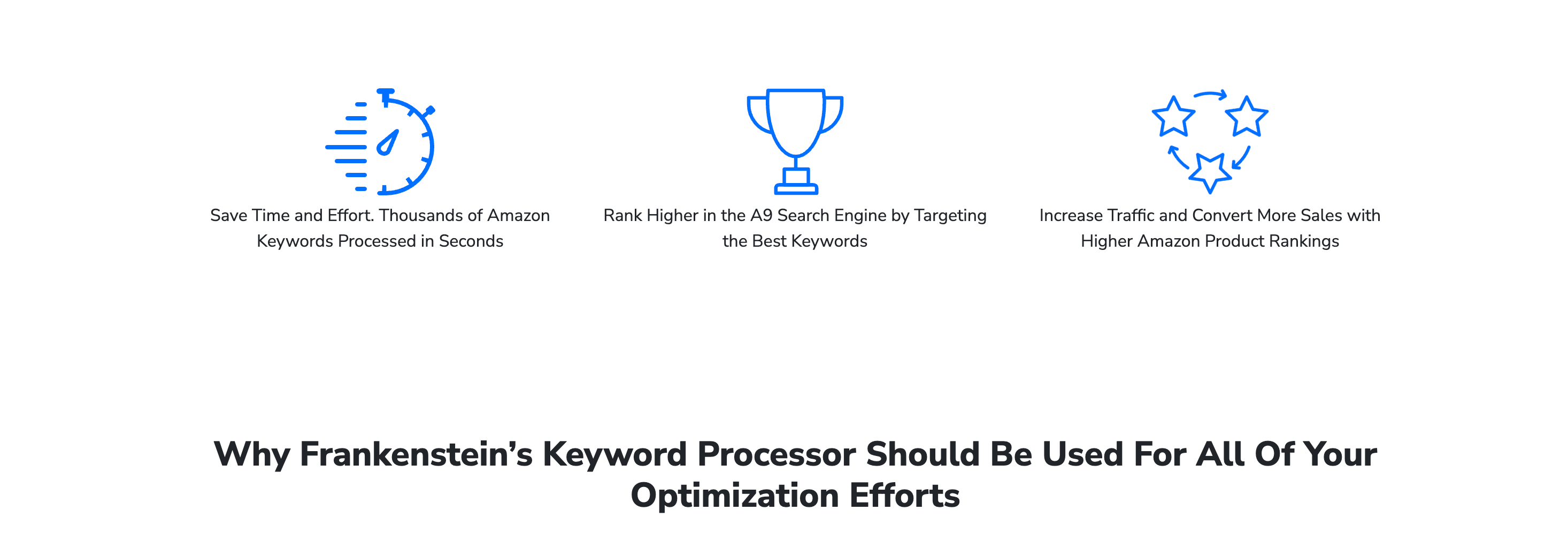
7. Case Studies: Success Stories in Seasonal Product Selling
To illustrate the power of Helium 10’s tools in identifying and scaling seasonal product opportunities, let’s explore some real-life success stories. These case studies highlight how sellers used Helium 10 to uncover profitable seasonal products, optimize their listings, and scale their businesses. By learning from these examples, you can gain valuable insights into how to apply these strategies in your own business. 📚📊🎄
7.1. Case Study 1: Dominating the Holiday Decor Market
A seller used Helium 10’s Black Box and Trendster tools to identify a gap in the holiday decor market: customizable Christmas ornaments. By analyzing historical trends and setting filters for estimated monthly sales and competition, the seller launched a line of personalized ornaments just before the holiday season. Using Scribbles and Cerebro, the seller optimized the listing for high-performing keywords and created compelling content. Within two months, the product became a best-seller, generating over $50,000 in revenue. The seller then expanded their product line to include matching stockings and tree skirts, further scaling their business. 🎄💰🚀
7.2. Case Study 2: Capitalizing on Summer Outdoor Trends
Another seller used Helium 10’s Black Box to identify a trending product in the summer outdoor category: portable hammocks. By analyzing demand and competition levels, the seller launched the product in early spring, giving them enough time to build reviews and optimize their listing. Using Keyword Tracker and Cerebro, the seller ran targeted PPC campaigns and optimized their listing for search rankings. The product quickly gained traction, generating over $30,000 in revenue during the summer months. The seller then expanded their product line to include hammock accessories like straps and carrying bags, further increasing their profits. 🌞🛏️📈
7.3. Case Study 3: Launching a Back-to-School Success
A seller used Helium 10’s Black Box to identify a profitable back-to-school product: ergonomic backpacks. By setting filters for estimated monthly sales and competition, the seller found a product with high demand and low competition. Using Scribbles and Cerebro, the seller optimized their listing for keywords like "ergonomic backpack" and "school supplies." The product launched in late summer and quickly became a best-seller, generating over $20,000 in revenue. The seller then expanded their product line to include matching lunchboxes and water bottles, further scaling their business. 🎒📚💡
7.4. Case Study 4: Winning the Halloween Market
A seller used Helium 10’s Black Box and Trendster tools to identify a trending Halloween product: LED pumpkin lights. By analyzing historical trends and setting filters for seasonal demand, the seller launched the product in early October. Using Scribbles and Cerebro, the seller optimized their listing for keywords like "Halloween decorations" and "LED lights." The product quickly gained traction, generating over $15,000 in revenue during the Halloween season. The seller then expanded their product line to include other Halloween decorations like string lights and inflatables, further scaling their business. 🎃💡📈
7.5. Case Study 5: Scaling a Winter Sports Business
A seller used Helium 10’s Black Box to identify a profitable winter sports product: heated gloves. By analyzing demand and competition levels, the seller launched the product in early winter. Using Keyword Tracker and Cerebro, the seller ran targeted PPC campaigns and optimized their listing for search rankings. The product quickly gained traction, generating over $25,000 in revenue during the winter months. The seller then expanded their product line to include other winter sports accessories like heated socks and hand warmers, further increasing their profits. ⛷️🧤📊
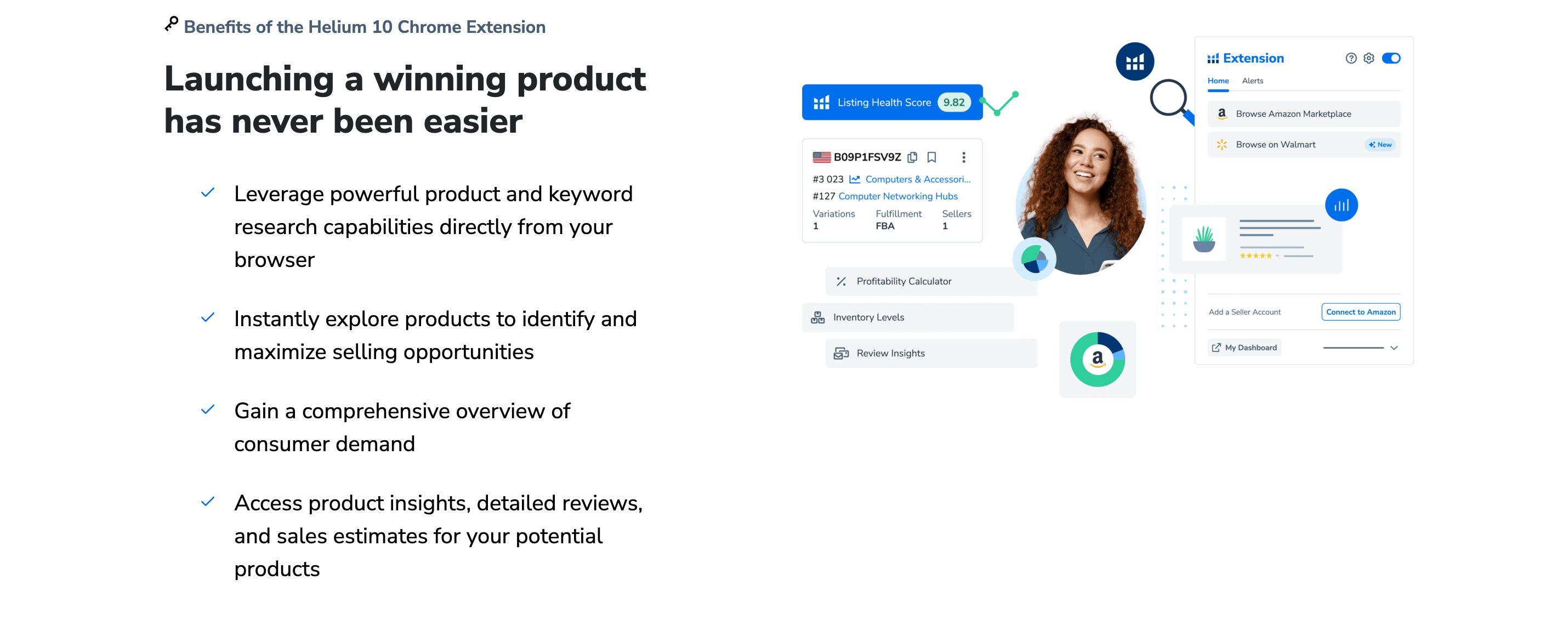
8. Future Trends in Seasonal Product Selling
As the e-commerce landscape continues to evolve, so do the trends and strategies for selling seasonal products. In this section, we’ll explore some future trends in seasonal product selling and how you can stay ahead of the curve. From advancements in AI to the growing importance of sustainability, these trends will shape the future of seasonal product selling. By staying informed and adapting to these changes, you can position yourself for long-term success. 🌟📈💡
8.1. The Role of AI in Seasonal Product Research
AI is transforming the way sellers conduct product research and identify seasonal opportunities. Tools like Helium 10’s Black Box and Trendster are increasingly incorporating AI algorithms to provide more accurate and actionable insights. For example, AI can analyze vast amounts of data to predict future trends, identify hidden opportunities, and optimize product listings. As these technologies continue to evolve, sellers can expect even more advanced tools that streamline the product research process and improve decision-making. By embracing AI, you can stay ahead of the competition and maximize your profits. 🤖📊🚀
8.2. The Growing Importance of Sustainability
Sustainability is becoming a key factor in consumer purchasing decisions, and sellers who prioritize eco-friendly products are likely to see increased demand. Use Helium 10’s Black Box tool to identify sustainable seasonal products by setting filters for categories like "Eco-Friendly Home Goods" or "Sustainable Packaging." Additionally, consider incorporating sustainable practices into your business, such as using recyclable materials or offering carbon-neutral shipping options. By prioritizing sustainability, you can attract environmentally conscious customers and differentiate yourself from competitors. 🌍🛍️💡
8.3. The Rise of Private Label Seasonal Products
Private label products are gaining popularity in the seasonal product market, as they allow sellers to differentiate their offerings and build brand loyalty. Use Helium 10’s Black Box tool to identify opportunities for private label seasonal products by searching for categories with high demand and low competition. Additionally, use Brand Analytics to analyze customer preferences and identify gaps in the market. By launching private label seasonal products, you can create unique offerings that stand out from the competition and generate long-term revenue. 🏷️📈🎯
8.4. The Impact of Global Markets
As Amazon expands into global markets, sellers have the opportunity to reach a wider audience with their seasonal products. Use Helium 10’s Black Box tool to identify products that are popular in specific regions by setting filters for international marketplaces. Additionally, use Market Tracker to monitor trends in different countries and adjust your product line accordingly. By expanding into global markets, you can diversify your revenue streams and reduce your dependence on a single marketplace. 🌍📊🚀
8.5. The Evolution of Customer Expectations
Customer expectations are constantly evolving, and sellers must adapt to stay competitive. Use Helium 10’s Review Insights tool to gather feedback from customers and identify areas for improvement. Additionally, stay attuned to emerging trends in customer preferences, such as the demand for personalized or customizable products. By meeting and exceeding customer expectations, you can build a loyal customer base and ensure long-term success in the seasonal product market. 📊💡🎯
Conclusion
Identifying and scaling seasonal product opportunities with Helium 10’s tools is a powerful strategy for Amazon sellers looking to maximize their profits. By leveraging tools like Black Box, Trendster, and Cerebro, you can uncover profitable seasonal products, optimize your listings, and scale your business. Additionally, staying informed about future trends and continuously analyzing your performance will help you stay ahead of the competition. Whether you’re a new seller or an experienced entrepreneur, Helium 10’s tools provide the insights and automation you need to succeed in the seasonal product market. 🌟📈🚀
| Tool | Purpose | Key Features |
|---|---|---|
| Black Box | Product Research | Filters for sales, price, reviews, and competition; identifies seasonal products. |
| Trendster | Trend Analysis | Analyzes historical trends; predicts future demand for seasonal products. |
| Scribbles | Listing Optimization | Drafts and optimizes product titles, bullet points, and descriptions. |
| Cerebro | Keyword Research | Generates keyword ideas; provides search volume and competition data. |
| Inventory Protector | Inventory Management | Sets minimum and maximum inventory levels; adjusts pricing based on stock. |
| Refund Genie | Minimizing Losses | Identifies and claims reimbursements for lost or damaged inventory. |
| Product Tracker | Performance Monitoring | Tracks BSR, price, and reviews; provides alerts for significant changes. |
| Market Tracker | Global Market Trends | Monitors trends in different countries; helps sellers expand internationally. |
| Review Insights | Customer Feedback | Gathers feedback from reviews; identifies areas for product improvement. |
By leveraging these tools and strategies, you can unlock the full potential of seasonal product selling and achieve your business goals. 🎯📊💡


Comments